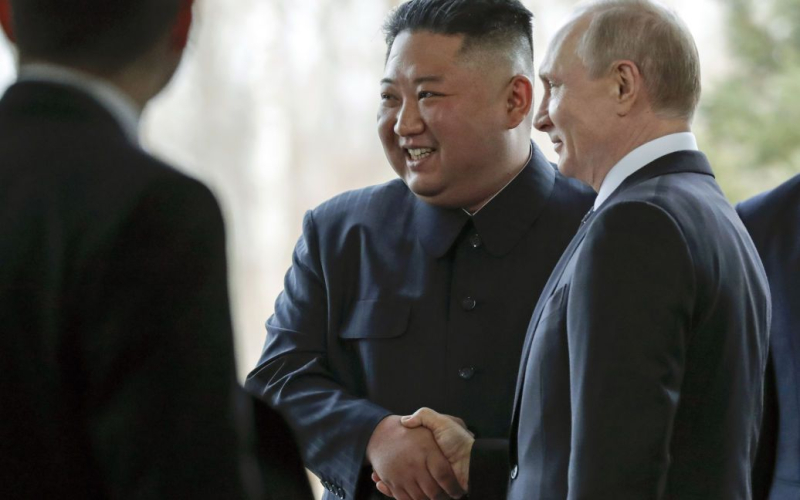
The shells will last about two months.
North Korea has sent more than a million artillery shells to Russia since August to help fuel Russian President Vladimir Putin's war against Ukraine.
As the Associated Press reported, citing a South Korean deputy, intelligence in Seoul reported this.
“Barter” of Kim and Putin
North Korea and Russia are actively raising the visibility of their partnership amid a deepening divided confrontation with the United States.
Their diplomacy, highlighted by a summit between North Korean leader Kim Jong-in and Putin in September, has raised concerns about an arms deal under which North Korea supplies Russia with desperately needed munitions in exchange for advanced Russian technology that strengthens Kim's nuclear army.
Both Pyongyang and Moscow deny US and South Korean claims that North Korea supplies weapons to Russia.
South Korean intelligence data
South Korea's National Intelligence Service believes North Korea has sent more than a million artillery shells to Russia via ships and other vehicles since early August to help bolster Russia's military capabilities in Ukraine, according to lawmaker Yoo Sang-beom. According to Yu, these shells will last for about two months.
The agency believes North Korea is operating its ammunition factories at full capacity to meet Russian demand for ammunition and is also mobilizing residents to increase production, Yu said.
There are also indications that North Korea sent weapons experts to Russia in October to advise Russian officials on the use of exported North Korean weapons.
Intelligence officials did not immediately respond to requests to confirm Yu's information about the meeting. The agency has a spotty track record of monitoring events in North Korea, compounded by Pyongyang's strict control over information.
What could this “mutual aid” lead to?
There are concerns in South Korea that North Korea could acquire Russian technology that would increase the threat of Kim's nuclear weapons and missile program. But intelligence believes it is more likely that Russian assistance will be limited to conventional capabilities, including efforts to improve North Korea's aging fighter jet fleet.
It is also likely that North Korea is receiving Russian technological assistance as it moves forward with plans to launch its first military reconnaissance satellite, Yoo's intelligence service cited.
After several launch failures in recent months, North Korea has fallen short of its promise to make a third launch in October. Yu said the NSC believes the North is in the final stages of preparing for a third launch, which is likely to be successful.
Kim has repeatedly described space reconnaissance capabilities as critical to monitoring U.S. and South Korean military activities and increasing the threat posed by his nuclear-capable missiles.
Experts say the decision to meet Putin at the Vostochny Cosmodrome, the main satellite launch site in Russia's Far East, hints at Kim's desire for Russian technological help on spy satellites.
Russia denies everything
UN Security Council resolutions ban North Korean satellite launches as it views them as cover for testing long-range ballistic missiles.
The United States, South Korea and Japan issued a joint statement on Oct. 26 strongly condemning what they called North Korea's supply of ammunition and military equipment to Russia, saying such arms transfers dramatically increase the human toll of Russian aggression in Ukraine.
The statement, released by the countries' top diplomats, came days after Russian Foreign Minister Sergei Lavrov denied a US claim that his country received weapons from North Korea after returning from a two-day visit to Pyongyang.
Earlier, the White House said that North Korea delivered more than 1,000 containers with military equipment and ammunition to Russia. The White House released photographs showing the containers were loaded onto a Russian-flagged ship and then transported by train to southwest Russia.
US Government images depicting the recent transfer of military equipment from North Korea to Russia
_ pic.twitter.com/2DwJ2ZZhqX— AWPS NEWS llc (@AWPSNews) October 13, 2023
Read also:
Related topics:
More news

